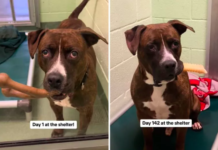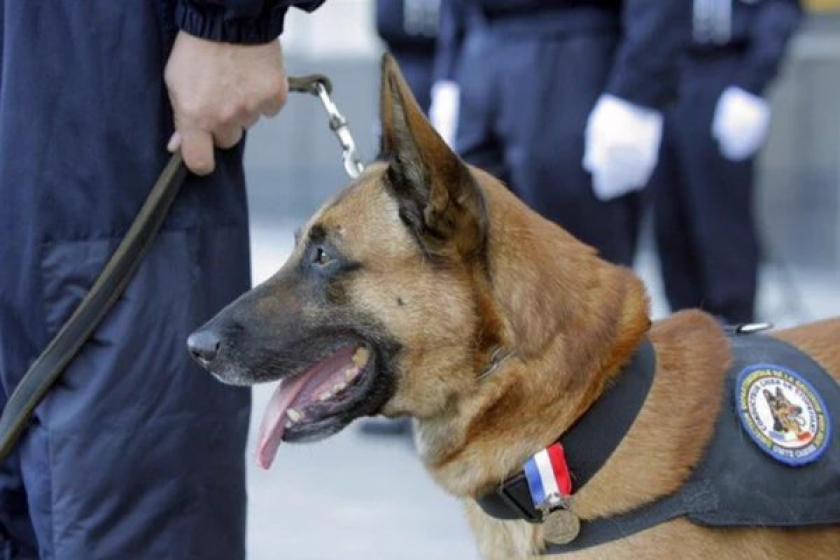Last Updated on August 26, 2023 by Fumipets
Things To Know Before Getting An Australian Cattle Dog (Blue Heeler)
The Australian Cattle Dog, also known as the Blue Heeler, stands as a testament to resilience, intelligence, and unwavering loyalty. Originating from Australia, this breed was developed to excel in herding cattle and adapting to diverse tasks. Let’s delve into the world of Australian Cattle Dogs and explore their remarkable qualities in this summary.
Australian Cattle Dog
Australian cattle dogs, also called Blue Heelers will not only outrun you but also herd you over the driveway, down the sidewalk, and into your vehicle. ACDs, as they are often known, are incredibly excellent at the task that has to be done because of their agility, intelligence, and efficiency.
Dr. Becker’s Bites co-founder Karen Shaw Becker, DVM, author of Real Food for Healthy Pets, thinks it’s crucial for pet owners to make informed choices in order to extend their animals’ lives. Australian cattle dogs are clever working dogs in addition to being a herding breed, thus they need daily tasks, according to the author. If you, as their guardian, don’t provide them constructive, interesting, and age-appropriate labor, they’ll come up with their own destructive projects, like tearing apart the sofa.
However, ACDs are aware of how crucial work-life balance is. They’ll wow your friends with their skill at Frisbee, disc golf, or any other outdoor activity you wish to play, are little and swift, and cuddle up at night for a well-earned rest.

Appearance
An Australian cattle dog looks at you with his perked tapering ears and attention-grabbing oval brown eyes. “What’s next?” he says, his gaze intense and eager. His snout is small and pointed, his head is curved and wide, and his somewhat bushed tail dangles carelessly from his hindquarters.
The body of an ACD represents the coiled, slender force that lies behind a double coat. His sturdy, nicely proportioned physique supports power and endurance while not being bulky or strong. He stands around 19 inches tall at the withers and weighs between 35 and 50 pounds. Short and bristly on the outside, the undercoat is soft and protects against harsh temperatures.
The hues of an Australian cattle dog signify his multiracial history, which includes ancestry from the Dalmatian, collie, and wild Australian dingo. He has a remarkable fur pattern that is either mottled or speckled with hues of white, gray, blue, black, or red. Although no two coats are ever exactly same, a common feature on many cattle dogs is a contrasting color patch over one or both eyes that is distinct from the color of the snout.
Temperament
Some individuals believe that subjecting dogs to obedience training stifles their free-spirited personalities. However, all dogs need the right kind of training and leadership, particularly Australian cattle dogs. They take their guarding duties seriously, have excellent problem-solving skills, and have sharp intellects. ACDs have an endless supply of energy, agility, and learning capacity.
Basic dog training in focused pursuits like tracking, obedience, and agility games helps him learn that you are the herd leader asking him to do an essential task and also promotes sound mental and physical health. A canine obstacle course with bean poles, high leaps, ladders, and tunnels may be a good test for him. He’ll finish it in 30 seconds and be prepared for more! Even after playing, some ACDs learn to put their toys away.
An Australian cattle dog is devoted to you, friendly, and loving, but may be slower to warm up to strangers in general: His pointed bark will be heard the greatest at that time. He constantly scans his domain looking for any threats to his herd.
According to Becker, cattle dogs should be socialized from an early age, beginning at the breeder, for the optimal emotional health. To guarantee that these dogs develop the social skills required to effectively interact with strangers, other animals, and children for the rest of their lives, Becker advises continuing this behavior throughout the first year of life.
After they complete their obedience course, Becker also advises enrolling them in a beginner’s scent-work program. “These super-smart dogs excel in this interactive, brain-stimulating game you can both enjoy for a lifetime,” she claims.
A cow dog is a sportsperson’s best friend because of its extraordinary endurance. He is at your side whether you want to go hunting, fishing, biking, camping, running, hiking, or skijoring (cross-country skiing while being towed by a dog). He is a tremendous tool to herd many different kinds of cattle if you have a farm.
Australian livestock dogs are obedient and effective by nature. He will nibble at the heels of anybody who he perceives to be out of line, including you, kids, and other dogs. His instincts to herd animals make this conduct natural, but it is not permitted in the household. This tendency may be controlled with appropriate positive conditioning and redirection, which are learnt in obedience training.
Living Needs
Imagine a cattle dog from Australia prowling the vast, desolate desert. He oversees his herd, keeps an eye out for danger, and completes any other chores his owner may have from dawn till nightfall. With this situation in mind, it is simple to see why he would never be content living in an apartment or waiting for his people to get home for a long period of time.
If he isn’t working with you, strengthen his living space with high, secure fence so he can play fetch and other outdoor activities without having to worry about pursuing animals or oncoming traffic. Many cattle dog owners relate stories of their animals jumping for a Frisbee or springing over a 6-foot fence with a solid running start.
ACDs have strong hunting drives since it’s in their nature to guard the herd, therefore unless they’re pups when they meet cats and other dogs in the home, there can be problems. In general, older Australian cattle dogs who are adopted by a household perform better if they are the only pet there.
Australian cattle dogs can spend the night outside in spacious pens with runs and safe caves to snuggle up in, but they would prefer to be inside with you. However, if the two of you had a full day of action, he may not worry too much about where he sleeps at night as long as he knows he’ll spend the next day with you doing a lot of the same things.

Care
A cow dog from Australia doesn’t preen. He’s trained his thick double coat to be short and useful. He just needs to give it a fast weekly groom with a short-bristled brush to look his best since it is smooth, tidy, and lacks much oils. He typically has a pleasant fragrance as well, but if he is dirty, a wash every few months or so is beneficial.
Double-coated dogs shed heavily twice a year, often in the spring and autumn, when they “blow their coats” (change their coats). In order to eliminate loose, dead hair, the Australian cattle dog will need to be brushed and combed several times each week.
For strong teeth, healthy gums, and fresh breath, he will need routine home dental care. He will also require frequent nail trimming, particularly as a puppy, and weekly ear checks for cleaning and ear wax removal.
Health
Australian cattle dogs were trained to have extraordinary tenacity and are capable of withstanding both strong heat and bitter cold, despite the fact that the country’s Outback is one of the world’s most unpredictable and hostile environments. Consider your comfort in the same circumstances while evaluating theirs; if you treat them well, they should be OK.
According to Becker, the most crucial elements affecting an Australian cattle dog’s health, vigor, and longevity are a physiologically suitable diet and the dog’s immediate surroundings. You must look into his history in order to comprehend his future.
“Australian cattle dogs should be screened for hip, eye, and heart issues, as well as patellar luxation, or a slipped kneecap, as well as congenital hereditary deafness,” the author advises. They are also susceptible to progressive retinal atrophy, a hereditary disorder of the eyes. Verify that a puppy’s parents have undergone testing for these conditions. Please hold off on puppy purchases until you have seen copies of these test findings in person.
A degenerative joint ailment called hip and elbow dysplasia affects many working dogs, including ACDs. Your veterinarian should advise you about the appropriate tests at various life stages. He typically lives between 12 and 16 years thanks to preventative measures including a lean, healthy diet and regular exercise.
History
Australian cattle dogs have more varied ancestry than other breeds. The country’s stockmen spent a lot of time developing the ideal dog for the task in order to have dependable canine herders who could manage thousands of animals scattered over acres of vast western plains.
The initial dogs employed, British Smithfields, weren’t able to handle hot weather and difficult terrain. Breeders then crossed Smithfields with the natural wild breed of the nation, dingoes, and subsequently, Scottish Highland collies during the 19th century. One reason why ACDs are sometimes referred to as blue, red, Australian, or Queensland heelers is because Thomas Hall developed Hall’s heelers. Blue heelers and Australian cattle dogs are the same species, then!
When two brothers, Jack and Harry Bagust, determined that certain Dalmatian qualities would assist Hall’s heelers be more friendly with people and the black-and-tan Kelpie enhanced their working ability, integrated breeding reportedly continued.
The majority of Australian cattle dog pups are now born white as a tribute to their Dalmatian lineage, and as they grow, they acquire their distinguishing patterns and colors. The Australian cattle dog was certified as a pure breed by the American Kennel Club in 1980 after decades of breeding improvements.
Q&A on the Dynamic Australian Cattle Dog
1. What is an Australian Cattle Dog?
The Australian Cattle Dog is a medium-sized breed recognized for its endurance, agility, and striking coat patterns. Their distinctive appearance and remarkable work ethic make them stand out.
2. How do Australian Cattle Dogs perform in herding tasks?
Australian Cattle Dogs are renowned for their herding prowess. Their innate ability to control and direct livestock showcases their intelligence and dedication to their tasks.
3. What are the key traits of Australian Cattle Dogs?
These dogs possess a strong physique, a dense double coat, and a natural inclination to work. Their loyalty, protective nature, and boundless energy make them valued companions.
4. How do Australian Cattle Dogs fare as family pets?
Australian Cattle Dogs form strong bonds with their families and are known for their protective nature. Early socialization and consistent training are crucial to ensuring harmonious interactions.
5. What kind of activities suit Australian Cattle Dogs?
These dogs thrive on mental and physical stimulation. Engaging them in activities such as obedience training, agility, and puzzle games fulfills their need for challenge and engagement.
Australian Cattle Dogs: A Reflection of Resilience
Australian Cattle Dogs are a testament to the powerful connection between humans and animals, embodying versatility and dedication in their roles. Whether herding livestock or forming unbreakable bonds with their human companions, their unwavering spirit and adaptability continue to leave a mark on the world. From their heritage as working dogs to their cherished roles as loyal companions, Australian Cattle Dogs exemplify the extraordinary possibilities of the canine-human partnership.
https://www.youtube.com/watch?v=YtQgzRL73HI


















